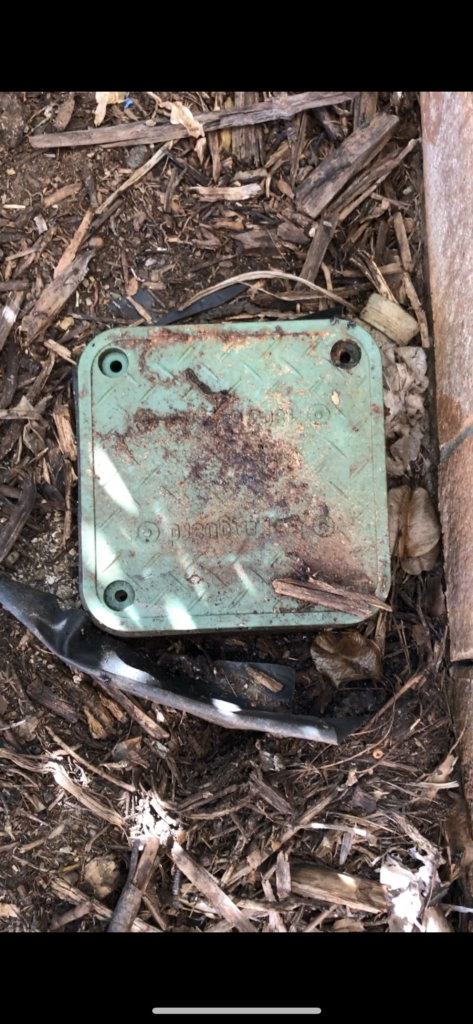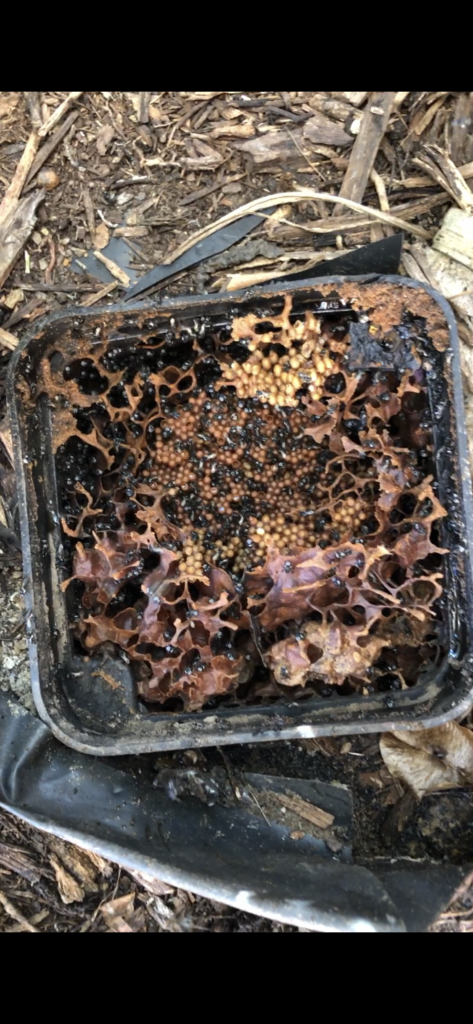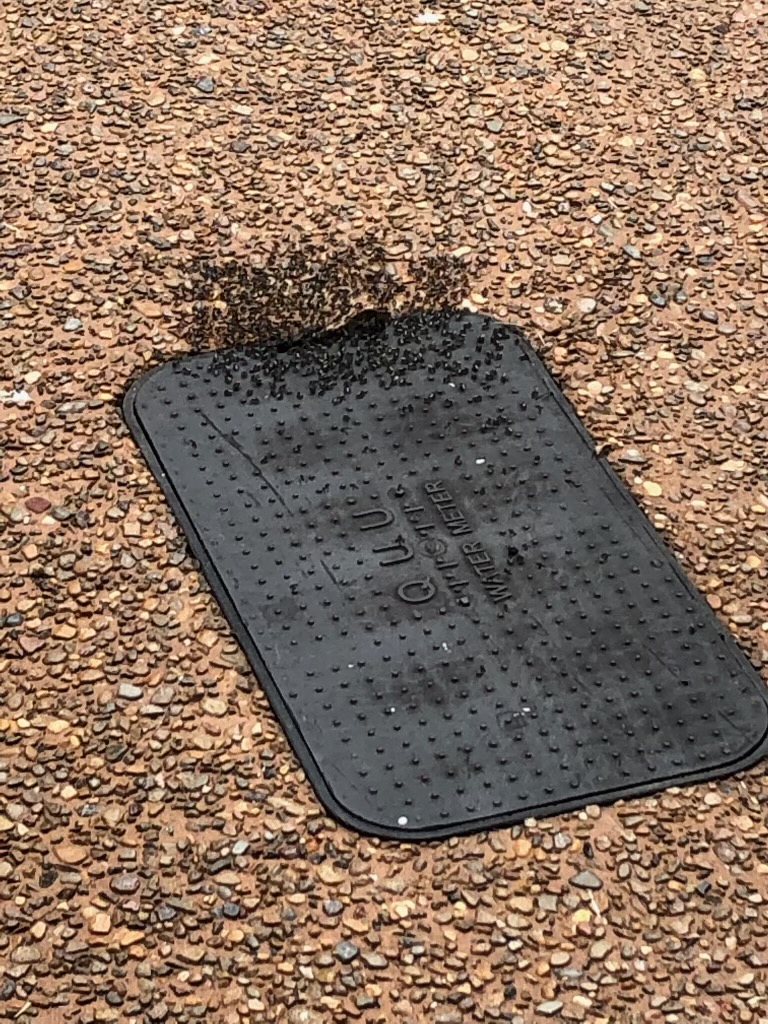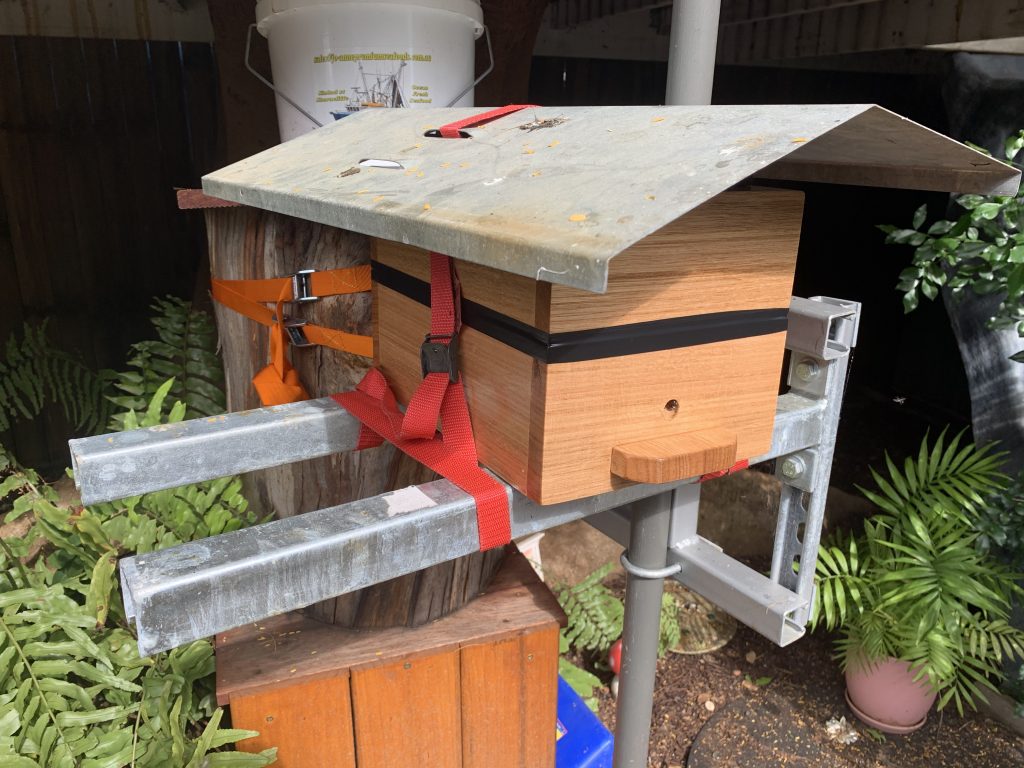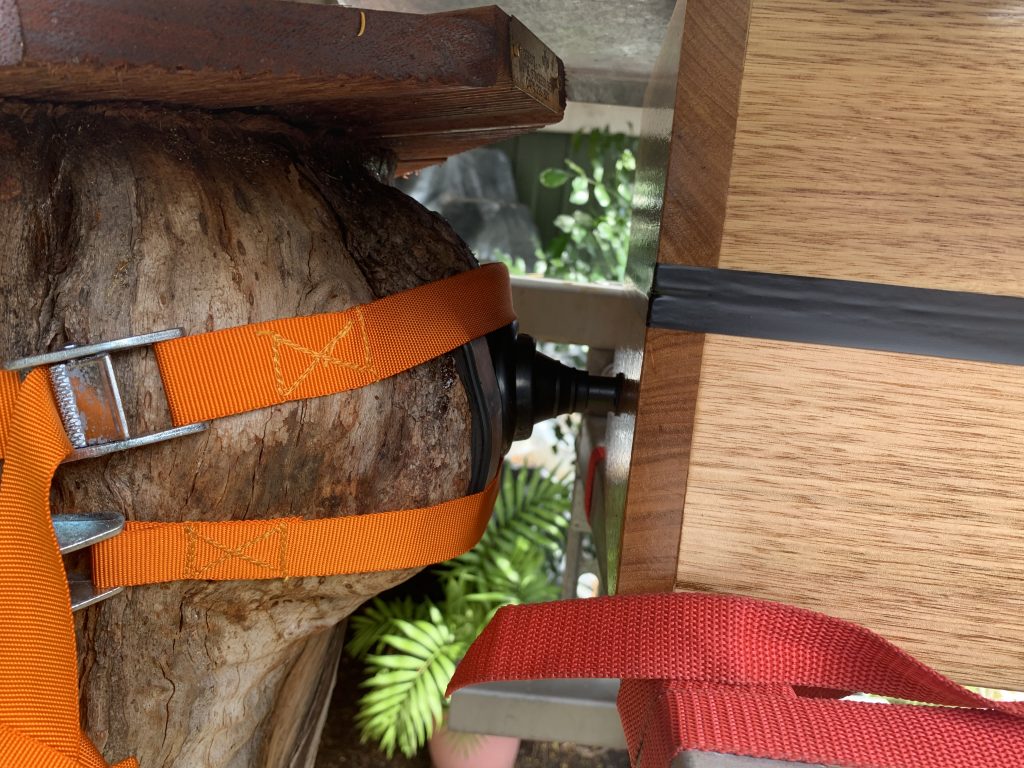At Brisbane Native bees we remove, rescue and relocated at risk Native bee colonies. The following photos show Native bees set up in a termite Reticulation box in Brisbane.
Native bees in Brisbane live in colonies and require safe enclosed areas to set up their Native bee colony. In Brisbane, native bees are often found in water meters and irrigation pits. Junction boxes are also used by Native bees and these are installed around home that have chemical reticulation for termites. Native bees in Brisbane often come and decided to set up in these reticulation boxes which isn’t the best for when a Pest controller needs to pump chemical into the system.
At Brisbane Native bees we remove and rescue Native stingless bees from areas that they are likely to be disturbed. Native bees are small black insect that can be found when opening a water meter or irrigation lid or the Native bees may be noticed when swarming around the area they are nesting.
When Native bees are located in a water meter of irrigation pit the lid should be replaced so as not to further disturb the Native Bees and you can call us at Brisbane Native Bees and we will be able to safely remove and relocated the at risk Native Bees. The Native bees are then monitored over several months to ensure the survival of the relocated colony.
For all Native bee removal and relocation contact us at Brisbane Native bees.
